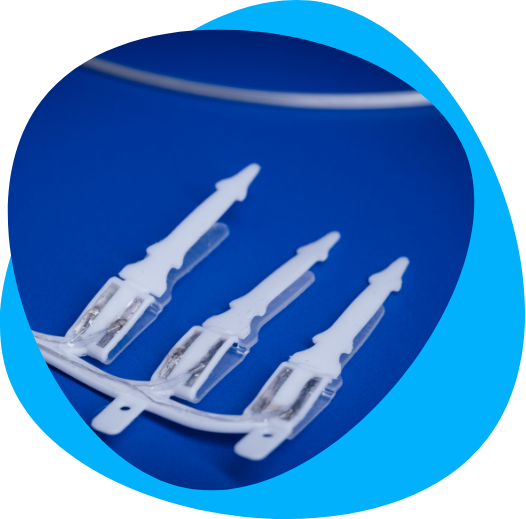Common approaches are listed below.
Urinary
incontinence
The main types of urinary incontinence are shown in Table 1.
TABLE 1
Main types of urinary incontinence [2]
| Stress incontinence |
Leakage on effort/exertion, or sneezing/coughing |
|---|---|
| Urge incontinence |
Leakage with, or immediately after, need to pass urine Overactive bladder (OAB) is a subtype due to bladder muscle overactivity |
| Mixed urinary incontinence |
Leakage associated with urgency plus exertion/effort or sneezing/coughing |
| Functional incontinence |
Leakage due to inability to reach toilet in time |
| Urinary retention |
Incomplete bladder emptying causing overflow of urine when pressure increases on bladder e.g. coughing/sneezing |
| Nocturnal enuresis (bedwetting in children) |
Leakage of bladder during sleep |
Table 2 describes common factors increasing likelihood of incontinence
TABLE 2
Factors that can increase risk of urinary incontinence
| Women and men | Women | Men |
|---|---|---|
|
Rising age [2] |
Overweight/obesity – risk increases with body mass index (BMI) [3] |
Prostate diseases [5] |
|
Neurological conditions e.g. stroke, Parkinson’s disease, multiple sclerosis, spinal cord injuries [2] |
Weak pelvic floor muscles e.g. from increasing number of vaginal deliveries [4] |
Prostate cancer treatments e.g. radical prostatectomy or radiotherapy [5] |
|
Urinary tract infection [2] |
After menopause [6] |
|
|
Medications e.g. diuretics [2] |
Pelvic organ prolapse [6] |
|
|
Constipation [2] |
Hysterectomy [7] |
|
|
Diabetes [5,8] |
||
|
Pelvic surgery/trauma [9] |
Evaluation methods include:
- A thorough medical history and physical examination
- Continence and quality of life questionnaires
- A bladder diary (times and volumes of urine voided)
- Urinalysis for infection
- Blood tests for kidney function and diabetes
- Ultrasound of urinary tract
- Urodynamic studies – tests of urine flow, bladder sensation and pressures; electromyography (measurement of electrical impulses of muscles and nerves in and near the bladder and sphincter) [10]
Stress incontinence:
- Weight loss
- Treating constipation
- Pelvic floor exercises [9]
OAB:
- Reducing alcohol and caffeine [9]
- Bladder training (delaying voiding with distraction or pelvic floor contraction) [7]
Functional incontinence
- Improving mobility and/or toilet access
- Bladder training (delaying voiding with distraction or pelvic floor contraction) [7]
Continence aids are also available, varying in fit and absorbency.
Medication
Identifying medications contributing to incontinence can be helpful.
Some drugs can be taken long term for OAB. However, side effects can include dry eyes, constipation, dizziness, and in the elderly, confusion.
Duloxetine is available for stress incontinence, but use can be limited by nausea, constipation, dry mouth and fatigue.
Surgical measures
For medication-resistant OAB, procedures such as botulinum toxin injection into the bladder wall can help [10]. For stress incontinence, operations such as the urethral sling are an option.
New treatment under development at the Bionics Institute
Bionics Institute researchers are developing a medical device that aims to restore normal bladder control via electrical stimulation.
How does it work?
• The device comprises a tiny electrode array implanted onto the pelvic nerve using keyhole surgery
• The device is being designed to sense bladder pressure by monitoring the pelvic nerve
• Using a closed-loop system it will stimulate the pelvic nerve to void the bladder when pressure indicates fullness.
• Experiments are planned to explore the best way to delay urination, to ensure the bladder is voided at a socially acceptable time
• This stimulating and sensing device is being optimised and validated under a range of relevant conditions.
This device is safe and has been approved for use in clinical trials.
With your help, we can accelerate the evolution of this device, improving the lives of those with urinary incontinence.
Medical disclaimer
This article contains general information relating to a medical condition. Such information is provided for informational purposes only and does not replace medical advice given by your healthcare professional.
References
1. Continence Foundation of Australia. Continence Foundation of Australia Pre-Budget Submission 2021-2022. 2021 [cited 2022 Feb 7];1–15. Available from: https://treasury.gov.au/sites/default/files/2021-05/171663_Continence_Foundation_of_Australia.docx
2. AIHW. Incontinence in Australia. (CC BY 3.0 AU) [Internet]. Canberra; 2013 [cited 2022 Feb 7]. Available from: https://www.aihw.gov.au/getmedia/0fc2a011-d290-42ef-a610-85073ef2909e/15387.pdf.aspx?inline=true
3. Subak LL, Richter HE, Hunskaar S. Obesity and Urinary Incontinence: Epidemiology and Clinical Research Update. J Urol [Internet]. 2009 Dec [cited 2022 Feb 7];182(6 Suppl):S2. Available from: https://www.ncbi.nlm.nih.gov/labs/pmc/articles/PMC2866035/
4. Lukacz ES, Lawrence JM, Contreras R, Nager CW, Luber KM. Parity, Mode of Delivery, and Pelvic Floor Disorders. Obs Gynecol. 2006;107:1253–60.
5. Shamliyan TA, Wyman JF, Ping R, Wilt TJ, Kane RL. Male Urinary Incontinence: Prevalence, Risk Factors, and Preventive Interventions. Rev Urol [Internet]. 2009 [cited 2022 Feb 7];11(3):145–65. Available from: https://www.ncbi.nlm.nih.gov/labs/pmc/articles/PMC2777062/
6. Hutchinson A, Nesbitt A, Joshi A, Clubb A, Perera M. Overactive bladder syndrome Management and treatment options. Aust J Gen Pract. 2020 Sep 1;49(9):593–8.
7. Tim S, Mazur-Bialy AI. The Most Common Functional Disorders and Factors Affecting Female Pelvic Floor. (CC BY). Life. 2021;11:1–18.
8. Lawrence JM, Lukacz ES, Liu ILA, Nager CW, Luber KM. Pelvic Floor Disorders, Diabetes, and Obesity in WomenFindings from the Kaiser Permanente Continence Associated Risk Epidemiology Study. Diabetes Care [Internet]. 2007 Oct 1 [cited 2022 Feb 7];30(10):2536–41. Available from: https://diabetesjournals.org/care/article/30/10/2536/30258/Pelvic-Floor-Disorders-Diabetes-and-Obesity-in
9. WA Research Unit of the RACGP. Managing Incontinence in General Practice|Clinical Practice Guidelines [Internet]. 2002 [cited 2022 Feb 7]. Available from: www.racgp.org.au
10. Yao M, Simoes A. Urodynamic Testing and Interpretation. (CC BY 4.0). StatPearls [Internet]. 2021 Aug 11 [cited 2022 Feb 7]; Available from: https://www.ncbi.nlm.nih.gov/books/NBK562310/
11. Duthie JB, Vincent M, Herbison GP, Wilson DI, Wilson D. Botulinum toxin injections for adults with overactive bladder syndrome. In: Duthie JB, editor. Cochrane Database of Systematic Reviews [Internet]. Chichester, UK: John Wiley & Sons, Ltd; 2011 [cited 2022 Feb 7]. Available from: https://doi.wiley.com/10.1002/14651858.CD005493.pub3



